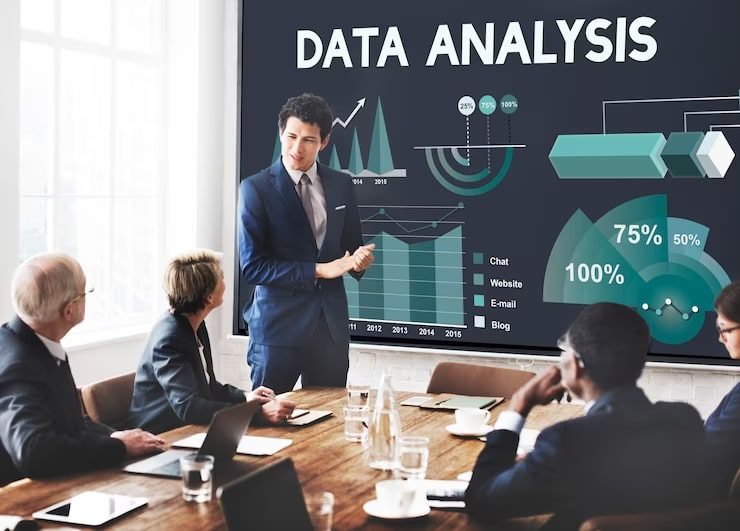Remember the days of gut feelings and hunches guiding business decisions? While intuition remains valuable, in today’s data-driven world, a more potent force is emerging: predictive analytics. This isn’t fortune-telling, but rather a powerful blend of statistics, machine learning, and historical data, allowing businesses to see beyond the present and anticipate the future. Imagine gazing into a crystal ball, not to predict your fate, but to understand your customers, optimize operations, and make informed decisions that propel your business forward.
From Intuition to Insights: The Powerhouse of Predictive Analytics
Businesses have long relied on experience and intuition for crucial decisions. However, the sheer volume and complexity of data forecasting, we now generate render such methods insufficient. Predictive analytics steps in, transforming raw data into actionable insights, empowering businesses to:
Become Customer Psychics: Predict customer churn, identify upsell opportunities, and personalize marketing campaigns for maximum impact. Imagine knowing which customers are likely to defect before they do, allowing you to intervene and retain them.
Optimize Like a Pro: Analyze historical data to identify inefficiencies in production, logistics, and supply chains. Predict equipment failures, optimize inventory levels, and ensure smooth operations for maximum profitability.
Unmask the Risk Gremlins: Utilize advanced algorithms to detect fraudulent activities, identify potential security breaches, and mitigate financial risks before they occur. This proactive approach can save millions and ensure financial health.
Stay Ahead of the Curve: Analyze market trends, predict consumer preferences, and identify emerging threats and opportunities before your competitors. This foresight allows you to be proactive, adapt to market shifts, and stay ahead of the curve.
From Buzzword to Reality: Seeing Predictive Analytics in Action
Predictive analytics isn’t just a trendy term; it’s already transforming industries:
Retail: Recommending products based on individual purchase history, predicting seasonal demand, and optimizing store layout for improved customer flow. Imagine knowing exactly what your customers want before they do.
Finance: Identifying fraudulent transactions, predicting loan defaults, and tailoring financial products to individual customer needs. Imagine reducing fraud and offering personalized financial solutions that resonate with your customers.
Healthcare: Predicting patient readmissions, identifying high-risk patients, and personalizing treatment plans for improved outcomes. Imagine saving lives and improving healthcare experiences through data-driven insights.
Manufacturing: Predicting machine failures, optimizing production schedules, and ensuring efficient resource allocation. Imagine minimizing downtime and maximizing production efficiency.
The Road Ahead: Challenges and Opportunities
The future of predictive analytics is bright, but challenges exist like data privacy concerns, model interpretability, and talent acquisition. Balancing the benefits of data analysis with ethical considerations and user privacy is crucial. Trust is paramount. Understanding how models arrive at their predictions is essential for building trust and avoiding biases. Transparency is key. Skilled data scientists and analysts are in high demand, requiring businesses to invest in talent development. Building the right team is essential.
Despite these challenges, the potential of predictive analytics is undeniable. As technology advances, data becomes more accessible, and talent gaps are addressed, businesses across industries will leverage this powerful tool to gain a competitive edge and thrive in the ever-evolving landscape. Businesses will leverage this powerful tool to make informed decisions, personalize experiences, and create a culture of innovation.
Backed by data-driven insights, businesses can make strategic choices with greater confidence and accuracy. By understanding individual needs and preferences, businesses can deliver personalized experiences that foster customer loyalty. Predictive analytics empowers businesses to experiment, test new ideas, and stay ahead of the curve with business insights.
Beyond the Numbers: The Human Touch
It’s important to remember that predictive analytics is not a replacement for human judgment and intuition. It’s a tool, best used in conjunction with human expertise, critical thinking, and ethical considerations. By harnessing the power of data while staying grounded in human values, businesses can truly unlock the potential of predictive analytics and navigate the future with confidence.
Conclusion
The role of predictive analytics in business is not simply about predicting the future, but rather about unlocking the power of data to make informed decisions in the present. It’s a transformative tool that allows businesses to gain a deeper understanding of their customers, optimize operations, mitigate risks, and seize opportunities. While challenges exist in terms of data privacy, model interpretability, and talent acquisition, the potential benefits are undeniable. As technology advances and these challenges are addressed, predictive analytics will become an even more critical tool for businesses seeking to gain a competitive edge and thrive in an increasingly data-driven world.







